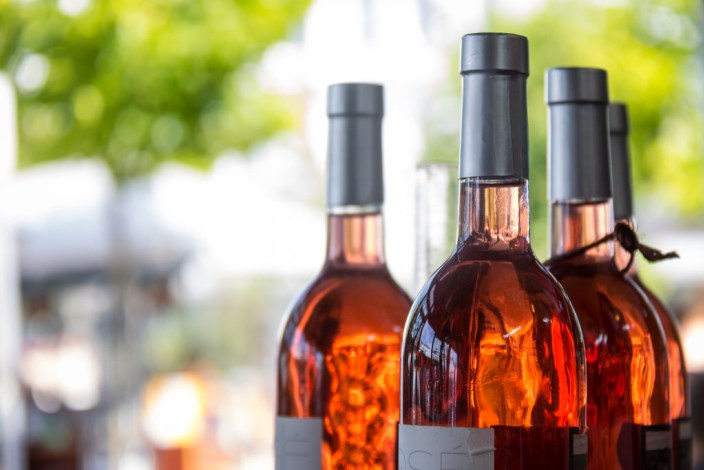
SBIFF 2018, photo courtesy Santa Barbara Vintners Foundation.
A spirited toast to all things alcoholic! by Leslie Dinaberg
Guests at the 34th annual Santa Barbara International Film Festival (SBIFF)—which runs from Wednesday, January 30 through Saturday, February 9 in downtown Santa Barbara—will get an extra warm welcome from our local winemakers.
Santa Barbara Vintners Foundation is sponsoring the festival and providing wine at nightly Filmmaker’s Happy Hours and post tribute Studio Parties from member wineries, including Au Bon Climat, Brander Vineyard, Brewer-Clifton, Brick Barn Wine Estate, Cambria Estate Vineyards, Folded Hills, Hitching Post Wines, Mail Road Wines, Margerum Wine Company, Nielson Winery, Pence Vineyards & Winery and Temperance Cellars.
“This is the second year the Vintners Foundation has sponsored SBIFF and we are proud to continue our support for this showcase for filmmaking and the community education programs that SBIFF organizes throughout the year for local students,” says Katy Rogers, president of Santa Barbara Vintners Foundation, the charitable umbrella under which Santa Barbara Vintners conducts its philanthropic work.
At the Opening Night Gala on Wednesday, January 30 in Paseo Nuevo, the wines of Brewer-Clifton, Cambria Estate Vineyards and Nielson will be served. The Gala follows a showing of the film Diving Deep: The Life and Times of Mike DeGruy at the Arlington Theatre.

Belvedere Vodka bar at SBIFF 2018. Photo by Rebecca Sapp/Getty Images for SBIFF.
Belvedere Vodka will also be on hand as the sole liquor sponsor of the 34th annual festival, serving signature cocktails like the Belvedere Classic Martini and Belvedere Expresso Martini, among others. Belvedere is the official sponsor of the Cinema Vanguard Award honoring Michael B. Jordan on February 7, where the brand—named “Vodka Producer of the Year” three times in a row by the International Spirits Challenge—will spotlight its “Beautiful to see. Beautiful to experience.” campaign.
Tickets for all festival events and film screenings, are available at sbiff.org. Hope to see you there. Cheers! Click here for more cocktail corner columns.
When she’s not busy working as the editor of Santa Barbara SEASONS, Cocktail Corner author Leslie Dinaberg writes magazine articles, newspaper columns and grocery lists. When it comes to cocktails, Leslie considers herself a “goal-oriented drinker.”
Originally published in Santa Barbara Seasons on January 30, 2019.




